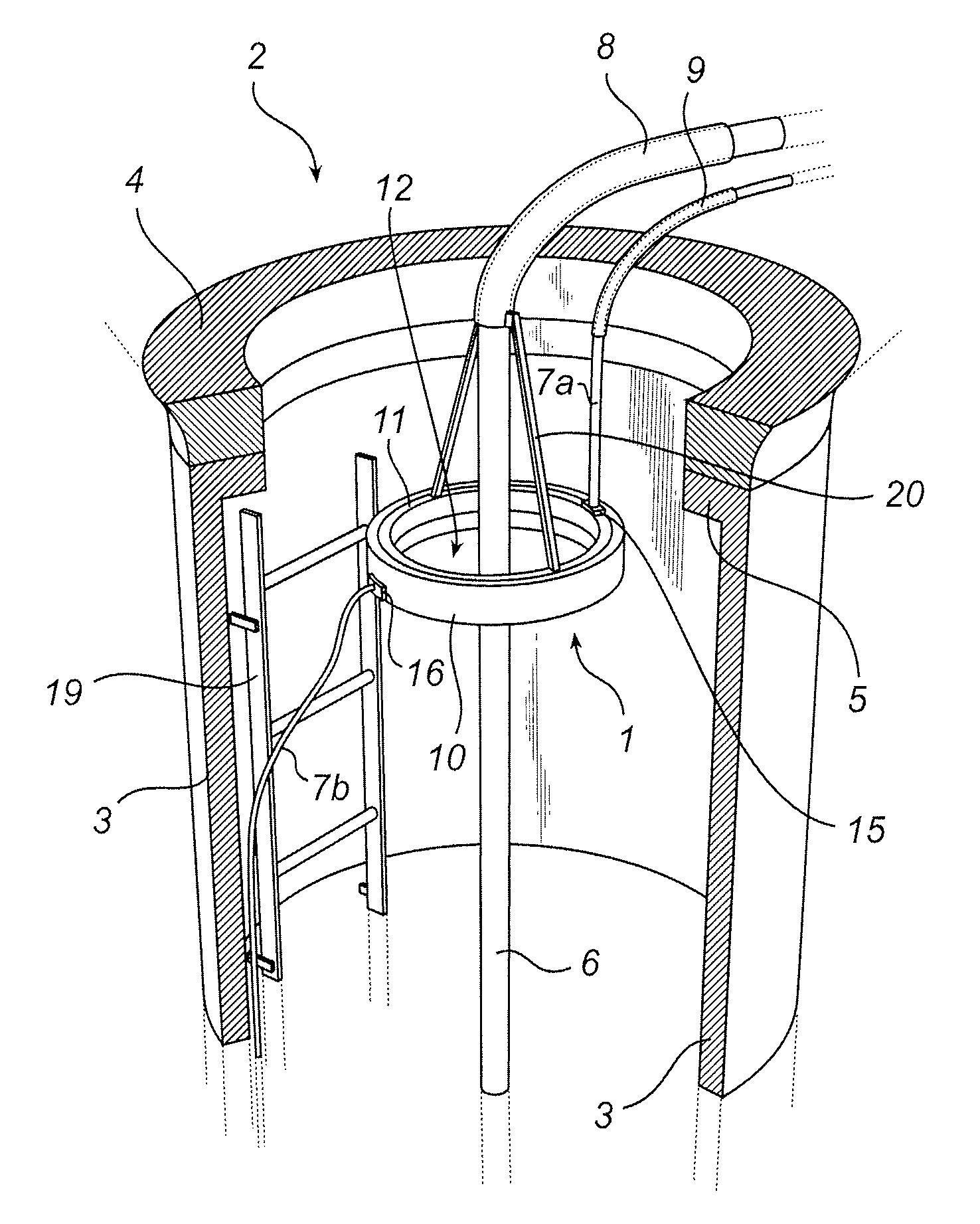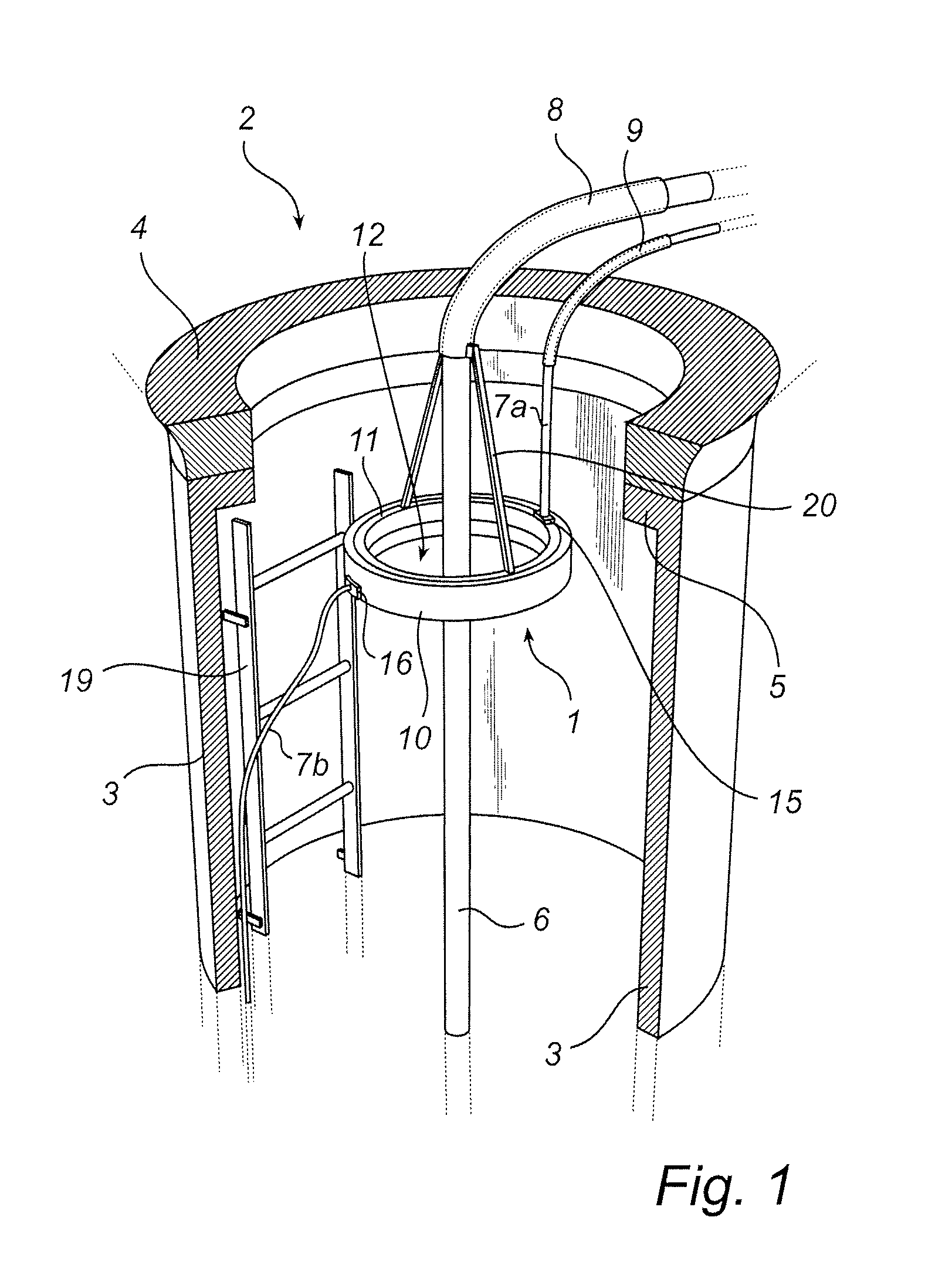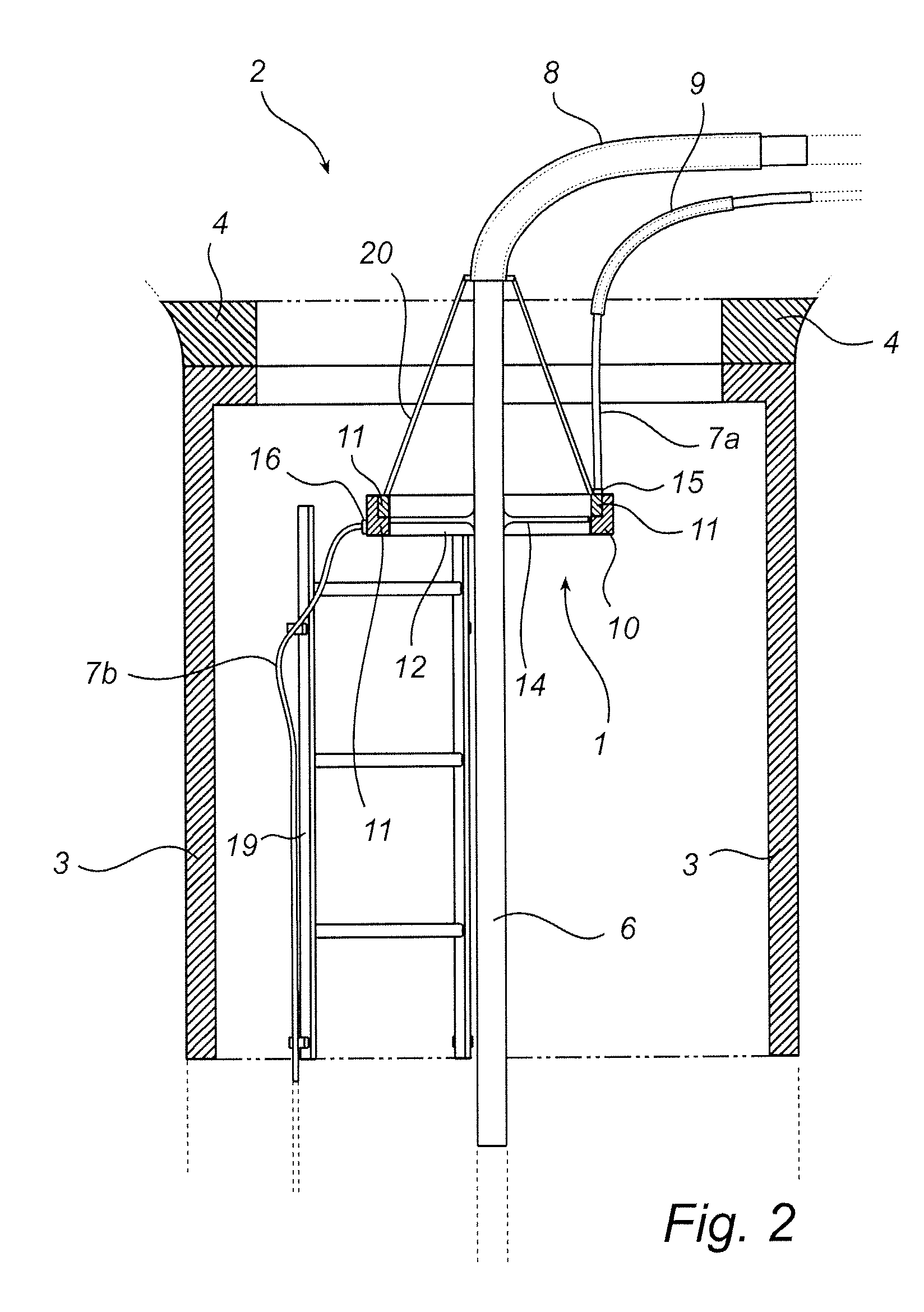Wind turbine
- Summary
- Abstract
- Description
- Claims
- Application Information
AI Technical Summary
Benefits of technology
Problems solved by technology
Method used
Image
Examples
Embodiment Construction
[0036]With reference to FIGS. 1 and 2, a slip ring assembly 1 used in a wind turbine 2 will be described. The wind turbine 2 comprises a tower 3, a nacelle 4 arranged on top of the tower 3 and a slip ring assembly 1. The slip ring assembly 1 is arranged in an upper section of the wind turbine tower 3, adjacent a top flange 5 of the tower 3. The tower 3 is extending from the ground to the nacelle 4. Bearings (not shown) may be arranged between the tower 3 and the nacelle 4, thereby allowing turning of the nacelle 4 in view of the tower 3. A first cable 6, which may be a high voltage cable or the like, is extending from the nacelle 4 towards the ground through the interior of the tower 3 in a vertical direction. At least one second cable 7a, 7b is also extending from the nacelle 4 towards the ground in the vertical direction. The at least one second cable 7a, 7b may be a signal cable, or any other cable arranged in the tower 3.
[0037]In order to facilitate the understanding of the inve...
PUM
 Login to View More
Login to View More Abstract
Description
Claims
Application Information
 Login to View More
Login to View More - R&D
- Intellectual Property
- Life Sciences
- Materials
- Tech Scout
- Unparalleled Data Quality
- Higher Quality Content
- 60% Fewer Hallucinations
Browse by: Latest US Patents, China's latest patents, Technical Efficacy Thesaurus, Application Domain, Technology Topic, Popular Technical Reports.
© 2025 PatSnap. All rights reserved.Legal|Privacy policy|Modern Slavery Act Transparency Statement|Sitemap|About US| Contact US: help@patsnap.com



